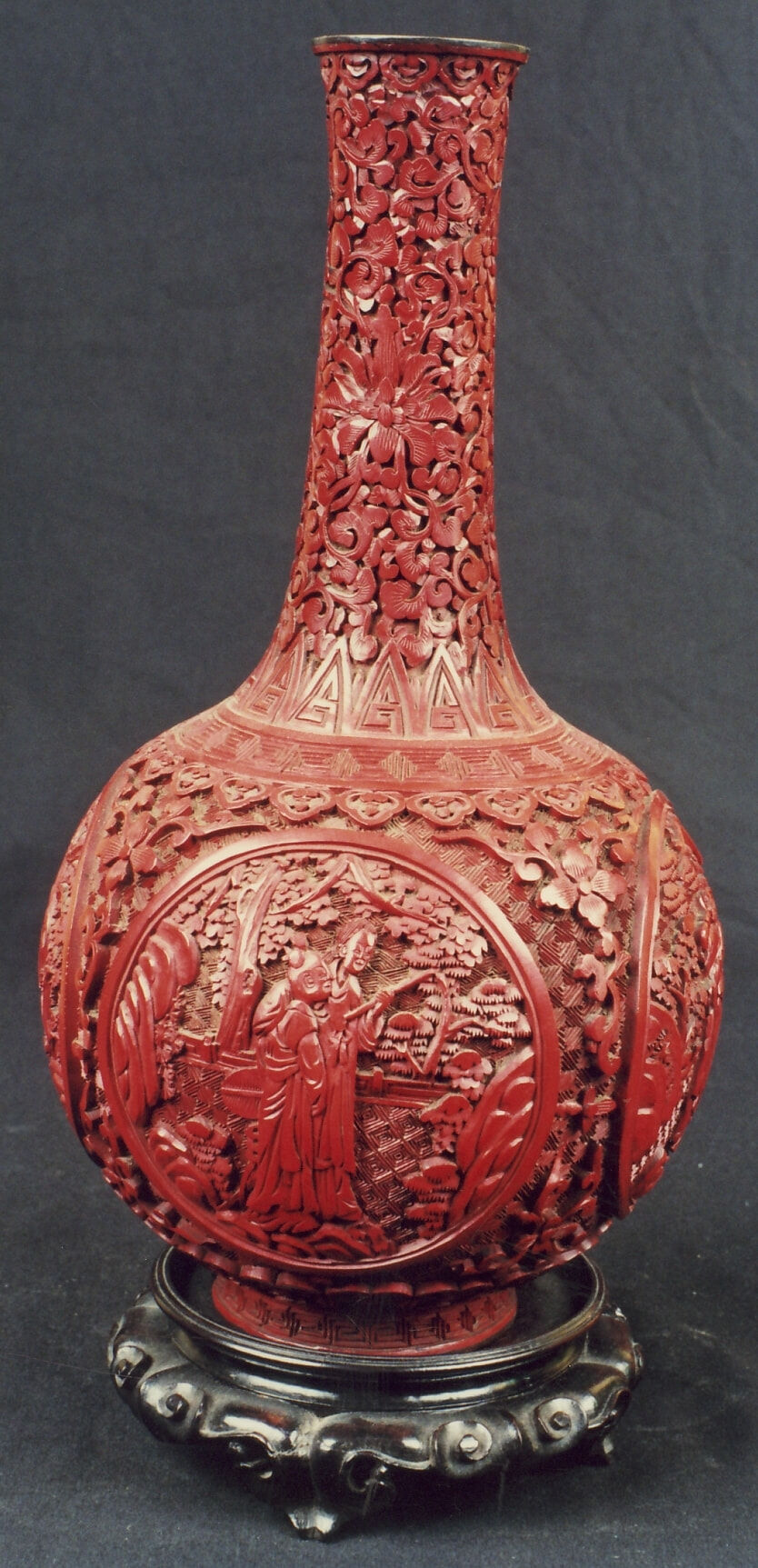A pair of red lacquer Vases

A pair of red lacquer Vases
By Rose Madder
Lacquer is derived from the sap of the Rhus tree, and from Stone Age times in China and Japan was used to decorate objects such as bowls and boxes made of wood, or other objects that have a hard smooth finish. It is impervious to insects and water and hardens on exposure to air.
Lacquering on wooden articles requires many layers of lacquer. Each layer takes several days to dry and harden before the next layer is applied. There would be up to 250 layers, so it is labour intensive, time consuming, and could take up to two years of preparation before carving could commence. The lacquer fumes and colouring in their raw state are highly toxic; for example, the colouring cinnabar, which was derived from mercury, provides the characteristic red colour.
The surface could be carved or decorated with shells, mother of pearl or perhaps gilded with gold, silver and copper. These lacquered items would be regarded as prestigious pieces so often made for the Imperial Court.
It wasn’t until about 1600 that lacquerware reached Europe through the Dutch East India Company. It came in the form of cabinets, screens, boxes, vases and chests. Its unique and exotic quality appealed to the Europeans, who tried to imitate this technique. As the best lacquer furniture came from Japan, the process became known as japanning. The imitations were not as lustrous, and the drawings were more naïve than those produced in China and Japan.
The vases are probably from China. On the neck of the vases there are densely carved stylised flowers and scrolling plants. On the bodies are four medallions that illustrate scenes from literature, possibly from the novel A Dream of Red Mansions, which was one of the most famous and influential works of literature in the history of China, written in the early eighteenth century, but not published until 1791.
The garden settings on the medallions feature unusually shaped rocks called “Scholar rocks.” It was thought that the Immortals lived on the Penglai Islands in the Eastern Sea. One early Emperor decided that instead of the annual pilgrimage to worship these deities, it would be easier to erect rocks resembling the Penglai islands in the Imperial garden, so the deities could take up residence and save him the stress and turmoil of travelling. Later these eccentrically shaped rocks were collected by scholars, who would place them on their desks, and in their gardens, hence the name.
References
Highlights from a lecture given by Ruth Clemens in June 2010
Dictionary of Antiques by George Savage, Mayflower Books, 1978
This article was originally published in fairhall, Issue 1, December 2010, pp. 12
Journals
About US
Explore
Contact
VISIT
See our VISIT page for hours and directions
BY PHONE
+61 3 9416 2515
BY POST
PO Box 79, East Melbourne VIC 8002
ONLINE
General enquiries
Membership enquiries
Shop
Donation enquiries
Subscribe to E-Newsletter



